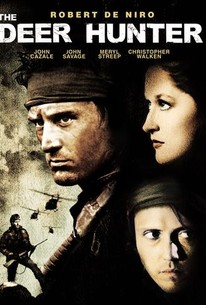 Patrick Henningsen
Patrick Henningsen
21st Century Wire
I don’t normally jump on cue to see any film or read any book, no matter how big the hype might be. I made an exception for Clint Eastwood’s American Sniper, released this week, and with some passionately mixed reviews. The reason I made an exception to follow-up on this film was not because of the movie itself, but because of the conversation which is forming around it.
If you are looking for an anti-war rant, this is not the article for you. I’ve already published dozens of articles about the ills of Iraq and Afghanistan. What we’ll be discussing here is multi-layered; brutally blunt in some areas, and subtle in others – just as this film is constructed…

Sniper, released by Warner Brothers this week, is a characterization of the recently deceased Navy SEAL, Chris Kyle who is played by Bradley Cooper. More than anything, the film paints the picture of Kyle as a All-American, God-fearing devout Christian, who also happened to be the US military’s “most effective sniper during the Iraq War”. It chronicles Kyle’s journey from cowboy to late-bloomer SEAL, entering the military at 30 years old, through his four tours of duty in Iraq and ending in his untimely death – shot in the head at close range in what appears to be a double murder carried out by 25 year old ex-Marine Eddie Routh at Rough Creek Lodge, Texas on February 2, 2013. The circumstances surrounding Kyle’s death and that of his associate Chad Littlefield’s, are suspicious to say the least and not surprisingly, the film doesn’t delve into this at all. Routh’s trial is set to begin in a few weeks and will no doubt attract more national media attention because of the film’s success.
At the very same time this film was being released on the heals of three consecutive weeks of wall-to-wall media coverage of the Paris Terrorist Attacks, US networks like CNN and FOX News were working incredibly hard to sell a possible military intervention in Yemen, and President Barack Obama was simultaneously softening the ground for a return of US troops to Iraq. Those suspicions were confirmed yesterday when America’s premiere war propagandist, Wolf Blitzer, was noticeably excited about the prospect of, ‘US troops joining the fight against ISIS in a campaign to recapture Iraq’s second largest city [Mosul].”
You might be asking: what has this got to do with Hollywood’s latest prestige biopic about a Navy SEAL ‘legend’? Everything.
Since 2002, American war heroes have been hard to come by. Previous attempts at lionizing members of the military have met with failure. First there was Jessica Lynch, a story which was concocted by the Pentagon before being exposed as a fraud. Then came the Pat Tillman deception. After Tillman’s death in an April 22, 2004, documents revealed how US Army officials knew he’d accidentally been killed via ‘friendly fire’ by fellow his Rangers, but those details were withheld from the public – and Tillman’s family, until well after the heavily publicized May 3 memorial service media event. Some of this was told in the film, The Pat Tillman Story. Then there was the honeypot slip by ‘the sage of the surge’, General David Petraeus. It seems that Washington and Hollywood have been desperate for a real war hero – one who could lend a face to the cause. Will it be Chris Kyle?
Aside from the timing of this film’s release, what’s most important is the net effect, or the overall public sentiment regarding the film’s subject matter. In terms of the Iraq War, or military deployment in general, opinion-makers would like to know how sympathetic audiences are to Bradley Cooper’s character and to other soldiers in the film.This is crucial. If that was indeed the objective of the film – to give the US military a human face, then this movie is a resounding success. The other achievement of this film is that it succeeds in immortalizing Chris Kyle the soldier in the eyes of so many, however, to pull this feat off, Eastwood and his team had to bend reality more than a little (more on that later).
I went into this film expecting one thing and getting something completely different. For anyone who is familiar with Clint Eastwood’s work, you’ll know that the film will not be a typical Hollywood drive-by action movie, complete with gratuitous violence and a meaningless love angle, punctuated by a stupid joke or trite irony at the end of the film. With Eastwood you can expect a deep character study – with any obvious politics left at the door. But by leaving out the obvious politics of war from his film, Eastwood leaves the door wide open for that conversation to happen in the reviews currently swirling around his creation. That is one of the geniuses of any great artist, Eastwood included, and I would not think for one moment that this was not intentional on his part.
As Hollywood war films go, Sniper, is one of the most interesting Hollywood war productions to date because it doesn’t come off as a typical war propaganda film. As a stand alone film, American Sniper succeeds in winning hearts and minds, not just of the typical GOP ‘Red State’, or flag-waiving Tea Party crowds, but it also wins over moderates as well, hence, the film’s opening box office numbers were outstanding, pulling in a record-breaking $107 million over its opening weekend. As I sat in the cinema, the emotion and suspense felt by theater goers was palpable. This is a testament to a combination of outstanding acting and filmmaker Eastwood’s ability to draw the audience deep into the character and the experience. This is where Eastwood’s talent as a director shines through. However, Eastwood does not need to win over the patriotic crowd who will love this film and automatically cheer for their “warrior” no matter what.
The real target for Sniper is the middle ground. Putting aside Kyle’s cowboy, demonstrably alpha male and cock-sure persona, what really comes across is a soldier who was numb to politics, and who seemed uncertain about his role in the war and America’s place in the world. In the film, he kept telling his wife that he was going “over there” to protect her and the kids at home. But who really believes that? Was this line designed to lampoon Kyle, or was it meant to portray his ‘patriotism’. It’s things like this that make this film difficult to work out.
‘The War Genre’
 Sniper attempts to personalize the Iraq War in the same vein as the 1978 Academy Award-winning film, Coming Home, directed by Hal Ashby and starring Jon Voight and Jane Fonda, which gave a human face to Vietnam and its veterans, revealing a new sensitive and interpersonal side of that war and its effects in a way never portrayed before it. Voight masterfully portrayed a crippled returning Marine struggling with himself, and a marriage seemingly crushed by a divisive conflict. It’s interesting to note what the critics said about that film then, and how you can almost transpose those reviews with today’s critical acclaim of Sniper. Charles Champlin from Los Angeles Times commented at the time: “Despite an over explicit soundtrack and some moments when the story in fact became a sermon, the movie effectively translated a changed national consciousness into credible and touching personal terms”. Indeed, ‘national consciousness’ being the operative words there.
Sniper attempts to personalize the Iraq War in the same vein as the 1978 Academy Award-winning film, Coming Home, directed by Hal Ashby and starring Jon Voight and Jane Fonda, which gave a human face to Vietnam and its veterans, revealing a new sensitive and interpersonal side of that war and its effects in a way never portrayed before it. Voight masterfully portrayed a crippled returning Marine struggling with himself, and a marriage seemingly crushed by a divisive conflict. It’s interesting to note what the critics said about that film then, and how you can almost transpose those reviews with today’s critical acclaim of Sniper. Charles Champlin from Los Angeles Times commented at the time: “Despite an over explicit soundtrack and some moments when the story in fact became a sermon, the movie effectively translated a changed national consciousness into credible and touching personal terms”. Indeed, ‘national consciousness’ being the operative words there.
 Contrast this public reception to another war classic, The Deer Hunter, directed by Michael Cimino, which came out in the same year, 1978. The film was daring, and employed a number of daring storylines and allegories in its attempt to try and do what Coming
Contrast this public reception to another war classic, The Deer Hunter, directed by Michael Cimino, which came out in the same year, 1978. The film was daring, and employed a number of daring storylines and allegories in its attempt to try and do what Coming
Home succeeded in doing – that is, to try and make some sense of 15 years of madness in Vietnam. Producer Michael Deeley explains, “Men who fight and lose an unworthy war face some obvious and unpalatable choices. They can blame their leaders.. or they can blame themselves. Self-blame has been a great burden for many war veterans. So how does a soldier come to terms with his defeat and yet still retain his self-respect? One way is to present the conquering enemy as so inhuman, and the battle between the good guys (us) and the bad guys (them) so uneven, as to render defeat irrelevant. Inhumanity was the theme of The Deer Hunter’s portrayal of the North Vietnamese prison guards forcing American POWs to play Russian roulette. The audience’s sympathy with prisoners who (quite understandably) cracked thus completes the chain. Accordingly, some veterans who suffered in that war found the Russian roulette a valid allegory.”
The imagery in Deer Hunter is unforgettable, and it is undoubtedly the sort of art that endures. However, where DeNiro and Walken struggle with self-loathing and regret, Cooper projects a soldier brimming with confidence, unhindered by the inconvenience of guilt, or any moral conundrums. This is the new, archetypal 21st century ‘warrior’ for a modern day American Sparta.
One similarity between Christopher Walken’s character in Deer Hunter and Bradley Cooper’s depiction of Kyle, is that both appear to be adrenaline junkies, eager to return back to the frontline for more action. Yet, Eastwood went to great lengths to make it appear that Kyle was only motivated by “getting the bad guys” and the thrill of the hunt. No other explanation is offered as to why Kyle would volunteer for a fourth tour in an asymmetric Iraqi war theater, while leaving his family to fend for themselves at home.
In remains to seen how well Sniper ages as a film. Will it be as powerful in 3-5 years as it appears to be today – presently dominating headlines and the debate on Hollywood’s depiction of war genres? Like a fine red wine, a film needs a lot more than hype, tension and technical execution to turn vintage. It needs to be daring and should challenge the whole perception of war as mankind’s last available option. Coming Home and Deer Hunter did that, as did Oliver Stone’s Platoon, and Stanley Kubrick’s Full Metal Jacket. Sniper attempted no such thing. It did not reinvent, nor did it recast the subject matter for its genre. However, it attempt at reforming the war genre – by taking the idea of an unpopular conflict and ‘dialing it down’ to the level of a highly skilled, but dispassionate character like Chris Kyle. In this way, Eastwood attempts to cast Kyle as a kind of anti-hero for our increasingly indifferent, nihilistic Iraq War generation, some of whom might be strangely attracted to Kyle’s haunting, and somewhat sadistic, detached personality.This challenges the archetypal war character, but it’s also the film’s Achilles heal, causing the film to feel quite dull, and with a lack of contrast. Regarding contrast, it appears that Eastwood and the writers missed an opportunity, having introduced the Arab character named ‘Mustafa’, an enemy insurgent and expert marksman who is meant to be Kyle’s opposite competitor, fueling Kyle’s desire to remain on the front line. It was this such rivalry that captivated audiences in the 2001 war epic, Enemy at the Gates, starring Jude Law and Ed Harris – the story of rival Soviet and German marksmen battling to hold Stalingrad during WWII. But Mustafa remains silent, with no speaking part, no back story, no history other than the Syrian sniper’s Olympic photo on his wall.
‘The Enemy’
As little as Eastwood revealed about Mustafa, it was much more generous that any other Arab or “native” portrayed in the film. Instead, Sniper simply reinforced the tried and true American tradition of dehumanizing ‘the enemy’ in this case through the eyes of a knuckle-dragging, beer swilling Navy SEAL named Chris Kyle, to the point of banality. After all, aren’t Iraqi ‘insurgents’ simply defending their Homeland from an invading, occupying foreign power?
This shows us how little has changed in Hollywood in 35 years. In her 1978 review of Deer Hunter, writer Pauline Kael commented on this very same issue, “The Vietcong are treated in the standard inscrutable-evil Oriental style of the Japanese in the Second World War movies… The impression the viewer gets is that if we did some bad things there, we did them ruthlessly but impersonally; the Vietcong were cruel and sadistic.“
Other reviewers have recognized this, too. John Simon of New York Magazine wrote in 1978, “For all its pretensions to something newer and better, this film is only an extension of the old Hollywood war-movie lie. The enemy is still bestial and stupid, and no match for our purity and heroism; only we no longer wipe up the floor with him — rather, we litter it with his guts.”
Reading these old reviews is like opening a time capsule, and being met with the ultimate horror as far as war films are concerned: that nothing has really changed.

US Army ‘Specialist’ Lyndie England holding a leash attached to a prisoner, known as “Gus”, who is lying on the floor, as part of the US torture program.
Eastwood’s deletion of ‘the enemy’ in this film certainly smacks of Orientalism, but it also indirectly reinforces a popular US media stereotype about Iraqis – that they lack depth as individuals, are unproductive, backwards and therefore, are not worth as much as an American, much less an American soldier. These are the exact same stereotypes that appear to have inspired the US Army’s 320th Military Police Battalion who presided over the notorious Abu Ghraib Prison photo sessions. Truth be told, I would be much more interested in seeing the ‘Natural Born Killer’-style film study of the US troops and command structure which brought us the twisted, sadism and institutional sickness on display at Abu Ghraib and Gitmo. A lot of Americans would like to know how such evil is produced. That is a film we might learn something from, yet, no studio would allow that story to be made into a blockbuster, because as any studio executive will tell you, “that’s the wrong story” (even if it’s the only story worth telling).
As it turns out, most of the iconic signature scenes in this movie never actually happened. The list of outright fabrications is just too long to list here. These include the dramatic opening scene (used in the trailer) showing Kyle trained-in on a woman and child who were preparing to throw a grenade at Kyle’s approaching platoon, as well as Kyle’s seemingly impossible record-breaking 2,100 yard ‘kill shot’, allegedly taking out his rival Mustafa. Sadly, these and other liberties were clearly taken by Eastwood and the writing team, as The Slate explains:
“In the movie, Kyle sees this woman remove a grenade from beneath her dress and hand it to her child. He shoots the child, and when the woman wails and picks up the grenade shoots her as well. He visually shows guilt, blinking, sniffling, and refusing the congratulations of his fellow soldier. However, according to the memoir, Kyle shot only a woman that day, not a child, and he felt no guilt about it: “It was my duty to shoot, and I don’t regret it.” It was his first kill with a sniper rifle, though he had not yet completed his sniper training. In his writing, Kyle calls the woman “evil” and reveals that many people, including himself, referred to Iraqis as ‘savages.'”
“As for his longest confirmed kill, Kyle targeted a roof-bound enemy insurgent aiming a rocket launcher at American soldiers outside Sadr City. And the shot did not, once made, alert Iraqi insurgents to their position and create a dramatic firestorm that disillusioned Kyle, as in the movie. (Elsewhere in his memoir he writes: “I loved what I did, I still do … I’m not lying or exaggerating to say it was fun.”)”
Again, a central part of Kyle’s Iraq experience in this film – that of dueling with his nemesis, an illusive Syrian sniper named “Mustafa” was more or less made-up. This is Hollywood history at its best: “As with Mustafa, the film exaggerates Kyle’s legendary status among his enemies. No $180,000 bounty was placed on his head or posters circulated bearing illustrations of his tattoos, as in the film—instead, $20,000 to $80,000 was the reward for killing any American sniper.”
This detail is absolutely key regarding the Chris Kyle myth-building exercise. One of the prerequisites for legend status (or sainthood) is to ‘do the impossible’, or to pull off a miracle. Without this, Kyle is just one of many tough grunts battling Haji in the desert. Contrast Kyle with another famous US sniper like Carlos Hathcock who served in Vietnam, and you can see that these were two very different animals. Hathcock was often sent out alone, behind enemy lines for days on end. He is not a household name and yet, he was arguably the greatest sniper in American military history. As a Vietnam Vet, Hathcock was not worth as much to the establishment, because no matter how talented he was, even the very best sniper could never sell that war.
Aside from this, the film’s creators appear to have taken an enormous amount of creative license in order to write the perfect patriotic story line, including the image Kyle going to a Navy recruitment office after watching a terrorist bombing killing civilians on the news. The real story was a lot more complicated, and much less glamorous, involving Kyle as a penniless party animal in need of cash. There’s nothing wrong with that, but when you’re building a legend, details like that tend to end up on the cutting room floor.
Where does the fiction end and the facts begin? It’s very hard to tell with Kyle, and unfortunately, this film does not make it any easier. The film’s ending was punctuated with a funeral procession for the fallen Navy SEAL, complete with silent closing credits and flashing images of overpass banners being hung over Texas highways in Kyle’s memory.
 DIRECTOR CLINT EASTWOOD (Image: Business Insider)
DIRECTOR CLINT EASTWOOD (Image: Business Insider)
The Military-Entertainment Complex
It’s important to understand that these big budget Hollywood productions do not exist in a creative vacuum. For most Americans, when they see ‘history’ played out on the big screen, it more or less validates that version of events. Both Washington and Hollywood understand this phenomenon very well. At between $150 and $200 million per production – it’s not cheap, and so the military-industrial stakeholders expect their film will have some desired effect, otherwise it’s a giant waste of money and a missed opportunity to steer public opinion. In many instances, even before production begins on a film like this, the US military industrial complex and the Central Intelligence are intimately involved, either on a consulting level, helping the production, or in a script advisory capacity, with the ultimate objective, we’re told, as far as the film production team and studio is concerned – is to make the film ‘as accurate as possible’. Pentagon officials normally ask to see the whole script, and not just the parts relating to the US military. If a historical film is being made, then it will also require a passing grade from the Pentagon’s historians. In this way, they are effectively writing a version of history for Hollywood. Al Jazeera’s report describes the surface layer of this relationship by profiling Phil Strub,the Pentagon’s liason officer to Tinseltown:
“While Strub is the point man for Hollywood in the Pentagon, usually the scripts come to his colleagues on the other side of the country, in Los Angeles. They work in a nondescript office block along downtown Wilshire Boulevard, in departments belonging to the different service branches of the U.S. military — Army, Navy, Air Force, Coast Guard and Marines. They serve tours of duty for several years, just like their fellow troops, but their task is singularly different: to study film and television scripts producers have sent them in the hope the Department of Defense will help them with their project.”
THere’s also the business of keeping old myths alive. In American Sniper, one particular terrorist’s name was repeated multiple times. He was a popular character used frequently by the media during the Iraq War, and even by George W. Bush himself. Known as “al Qaeda’s No. 2 Guy”, Abu Musab al-Zarqawi, was a made-to-order “myth” invented by US intelligence (go figure), and later adopted by the Pentagon as a rallying cry for US soldiers in desperate need of motivation, and also because it suited U.S. government political objectives in establishing Iraq as the primary front in the War on Terror. His appearance in Sniper serves to reinforce his myth, alongside a number of other popular terror avatars used by Washington and its allies.
As I pointed out previously with Hollywood’s wild stab at writing history in Zero Dark Thirty, the CIA played a pivotal role in making sure that film was actually made in the first place. The film helped to provide a public relations back-stop to a shaky “bin Laden raid” story which was quickly coming apart at the seams after some uncomfortable questions started to be raised from families of Navy SEALS allegedly killed later in the ill-fated ‘Extortion 17’ incident on August 6, 2011. Indeed, Katherine Bigalow’s Zero Dark not only gave the impression that the Bin Laden Raid happened exactly like Washington and President Obama said it did, but it also provided a nice PR cushion for the CIA’s controversial torture program, as the key premise of Zero Dark hinges on the CIA claim that by torturing detainee Ammar al–Baluchi a detainee from whom they were able to extract the information which led them to bin Laden’s courier named ‘al-Kuwaiti’ – which then led to the supposed ‘capture and killing’ of the illusive terror mascot Osama bin Laden. Quite a colorful and intriguing story, but that’s what Hollywood does best.
Just how deep does this relationship really go? Sony Entertainment’s The Interview is another recent example of the Hollywood-Washington-Pentagon Nexus. It lacked the stuff to break out on its own, and so a scandal was contrived between the studio and the White House to help boost the film’s popularity. But the story behind the film is much more interesting than the ‘North Korean Hack’ narrative. 21WIRE was one of the first media outlets to point out that Sony’s CEO Michael Lynton, who also sits on the board of the Rand Corporation, and who had passed an early version of the film on to both colleagues at Rand, as well as his contact at the US State Department in order to receive their blessing on the film and what impact it would have in furthering Washington’s stated foreign policy objective of regime change in North Korea.
It is central to both the Pentagon and the CIA missions, to make absolutely certain that when military blockbuster films hit cinemas they convey the correct message, in the context of what is going on around the world and within the country at that particular time. It’s expected that after this film, the amount of recruitment applications for military sniper positions will skyrocket. Whereas ‘Top Gun’ pilots were once the most revered, ‘safely’ removed combat technician/heroes, unmanned drones have since sidelined most of those men, leaving the snipers as one of the sole remaining ‘super-skilled’ warriors. All the signs are pointing to the inevitability of US troops
returning to the Middle East combat theater, either in Iraq, Yemen, or along a new NATO-sanctioned ‘No-Fly’ buffer zone along the Turkey-Syria border. As we speak, media war messaging is centered around ISIS, and that Washington ‘may be forced to send our boys back there.’ To do this, they will need more men, and also more snipers, and more Chris Kyles.

THE CRAFT: Kyle pictured with sniper rifle and his Craft International hat on.
Kyle in Real Life
If you compare this film to real life, there is a big gap between the Chris Kyle played by Cooper and the Kyle America knew. This is not so much as Kyle the soldier, but more as Kyle the media personality and entrepreneur. In the scenes depicting Kyle at home after his active duty service, Eastwood portrays Kyle as a mild-mannered family man who passed the time visiting and helping injured vets at the VA hospital and others suffering with PTSD, like Routh. Although this was the case, the film does not show the larger-than-life media personality which Kyle had cultivated when publisher Harper Collins released of his best-selling book, American Sniper: The Autobiography of the Most Lethal Sniper in U.S. Military History in 2012. In addition to his book tour, Kyle was also busy as the CEO of Craft International, a burgeoning young Blackwater-type, Pentagon contractor and security training company based in Dallas. Just before his death, Kyle was embroiled in a defamation lawsuit with none other than fellow ex-Navy SEAL, Jesse Ventura, a case which was settled in Ventura’s favor after Kyle’s death. There were other accusations of lying by Kyle, most notably, the incident where Kyle claimed to have shot looters during the aftermath of Hurricane Katrina in New Orleans.
During the Ventura controversy, Kyle was busy making the rounds on national television, and seems to be anything but the laconic, introverted character which actor Bradley Cooper and Director Eastwood show in the film. Watch this FOX News clip:
.
‘War and Peace’
Documentary filmmaker Michael Moore appeared to have used the release of Sniper as a media opportunity, regaining some attention to himself by accusing the film of ‘glorifying’ war and more specifically snipers, something Moore claims to take particular offense to after having “lost an Uncle” to a German sniper in WWII.
So the mass media debate really come down to this: is it art, or is it propaganda? Received wisdom says that if a film challenges a premise of a war, then it’s art. If the film doesn’t, or is seen to promote, or sugar coat a conflict, then it’s propaganda. However, with Sniper, despite Moore’s two-dimensional rant, it’s not easy to make such a distinction. Yet, Sniper just might just be the most sophisticated, precision of war propaganda tool seen to date.
While films are used to push and pull domestic and foreign policy, or to sway American hearts and minds, studio executives and big-time directors, including Clint Eastwood, are still counted on for their endorsements, and are, financially speaking, directly involved in deciding who wins US elections. However, if you are trying to pin Clint Eastwood down to fit into a nice little political category, or box, you will quickly become frustrated because he doesn’t really fit into any of them. A closer look at Eastwood’s record shows anything but warmongering though, as he has been an outspoken critic of just about every major conflict involving the US – from the Korean War to Vietnam, and all the way to Iraq and Afghanistan. A self-described ‘moderate conservative’, Eastwood has long been a believer that the US should not play the role of global policeman, and has even shown support of some gun-control measures. Some might even call him a ‘liberal’.
After the premiere screening of American Sniper at the Academy of Motion Picture Artists and Sciences’ Goldwyn Theater in Beverly Hills, 84-year-old Eastwood admitted, “I was against going into the war in Iraq since I figured we would probably trip over ourselves in some way.” He continues, “Sometimes the arrogance of wanting just to burst into war and not really researching the value of it and the tragic ending…”
As Eastwood’s views on war may not have shifted a whole lot over the years, Washington and Hollywood’s have. Presently, their joint efforts are still very much focused on taming the rebellious legacy of Oliver Stone, and evoking the ‘new improved’ world view of ‘warrior’ Chris Kyle. These days, it’s not uncommon to can see that actors and celebrities are now spokespersons for veterans’ charities. After his starring role in the film, Lone Survivor, actor Mark Wahlberg suddenly became the spokesman for Wounded Warrior Project, a “veterans service organization”, that offers “help for wounded veterans following the events of September 11, 2001”. Two narratives are clearly at play here. The first is a long-tail campaign designed to reform old 20th century language into 21st century Spartanspeak – by transforming previously maligned soldiers and ‘vets’, into brand new “warriors”, or “heroes”. With that, much of the collective guilt associated with Washington’s dirty wars is washed down the drain, as Americans can assuage their guilt by donating $19.99 a month to help their warriors.
It might come as a surprise to Wahlberg and the 20 other celebrities attached to that organization, that many Vets believe that the labeling people as “wounded warriors” is counter productive – a sort of crutch they’d rather discard. it’s unclear whether charity marketeers consider Vietnam Vets as “warriors” too, or is that ‘honor’ reserved for younger Iraq and Afghanistan service veterans? According to the US military, you are only deserving of the title ‘wounded warrior’ if you served after 9/11. If you served before that, well you’re just a ‘Vet’ according to Sparta’s clever wordsmiths. Nonetheless, it sure seems like a noble cause, and for certain celebrities, it’s a safe charity place to position their star brand, and most importantly – to help Americans to feel ‘a little bit better’ about war.
The whole narrative here is disturbing though, and is rarely challenged for fear of being construed as ‘unpatriotic’ – as the dialectic goes, ‘you’re either with us, or against us’. One has to ask the question at this point: what sort of federal government would recruit its young men, promising its soldiers of fortune ironclad medical care for life, before sending them to a proverbial hell hole like Iraq or Afghanistan, and then allow their maimed and disfigured to be exposed so grotesquely, in an infomercial side-show, begging America for more money? Shouldn’t the US government pick-up any and all medical expenses and provide the best treatment for injured combat veterans? It would be refreshing to see Wahlberg camped out on the White House lawn demanding an answer to that question. And you’re at it, you might also ask the question – what the hell are we doing “over there” in the first place? Oh, I’m sorry – that question is too political, too complicated for the new Hollywood. Let’s not talk about the fraud of both the Iraq and Afghanistan wars. We can just forget about all that and focus on our “warriors” instead, right? Sorry, my bad.
With the Oscars around the corner, it’s a given that this film will take home a few trophies, most likely for best actor, as Bradley Cooper reeled in the audiences’ attention with his stoic, but bold performance, clearly dominating the film with a carefully studied performance of Kyle the soldier.
As successful as this film was in casting Chris Kyle as an American legend, it shied away from the issue of war – a painless approach which actually suits a lot of Americans. In this way, the film was marketed towards a totally new demographic who would support such a film. These are the Americans who say, “We were never there, but we still care”. Undoubtedly, Eastwood knows this all too well, and that is probably why the film does not try, nor pretend to be anything more than it is, but one can’t help but be left wishing that it could have been so much more.
Many will still hold on to the hope that maybe, just maybe, Vietnam taught us something. There was strangely corporate about American Sniper, and it wasn’t just the sanitized or contrived treatment of the story. Nor was it watching Bradley Cooper sitting side-by-side with Chris Kyle’s widow Taya, promoting the studio’s latest creation. After watching this film it’s become clear that the politics of war in Hollywood is a quagmire. People are becoming aware that Hollywood, Washington and the US military establishment are strongly linked, yet, Hollywood is already way too far down the road, and too heavily invested in this new genre that makes war eerily palatable.
The reality is that after a decade and a half of brow-beating and synthetic patriotism, the America’s post-9/11 ‘Homeland’ has never been more insecure about its wars, and about its role as the world’s policeman. Instead of a film that helps America find out about itself, this film is designed to make America to ‘understand’ what the military is, through the narcissism of its latest legend.
Maybe Americans are just tired of their wars, and thus, tired of war films that make them feel bad about war. Or maybe, it’s just that being ‘anti-war’ in Hollywood is just not cool anymore.
Why let the politics of life and death get in the way of a good story? As Eastwood, Cooper et al – and Kyle, would all tell you, “Hey, we’re just hump’in money here. We’re just doing our job.”
This must be that ‘brave new world’ they warned us about.
***
Patrick Henningsen is a writer, investigative journalist, global affairs analyst, and co-founder and executive editor of 21st Century Wire. He is also host of the SUNDAY WIRE weekly radio show broadcast globally over the Alternate Current Radio Network (ACR).
READ MORE HOLLYWOOD NEWS AT: 21st Century Wire Hollywood Files
SUPPORT 21WIRE – SUBSCRIBE & BECOME A MEMBER @ 21WIRE.TV















